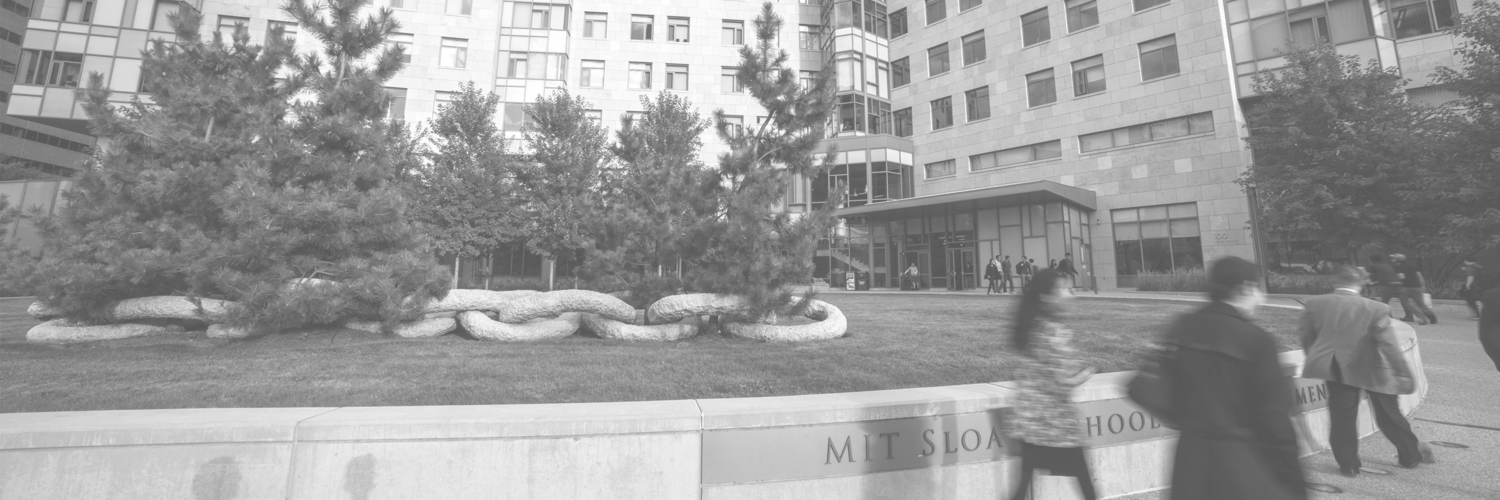What if patients could receive hospital-quality care from the comfort of home? Beth Israel Lahey Health is making that possible. In August 2023, they launched the Hospital at Home program at one of the system’s hospitals, Lahey Hospital & Medical Center in Burlington, MA, enabling qualified patients to receive inpatient level care in a familiar environment.
The ambitious project required entrepreneurial thinking and a startup mentality, which made MIT Sloan’s Healthcare Lab (H-Lab) a perfect collaborator, says Hospital at Home Vice President and MIT Executive MBA alumnus Susan Stempek, EMBA ’20.
“Innovation in healthcare is needed, but it’s challenging,” says Stempek. “I have the privilege of being part of a small leadership team in my health system managing a ‘startup’ amid larger organizational and healthcare ecosystem contexts. Many of the skills I learned at MIT apply as I’ve navigated this journey. I could uniquely provide the student team startup perspective, and they could provide fresh ideas.”
Streamlining the patient intake and retention process
The H-Lab team, which included Ibi Ayorinde, MBA ’24, Master of Science in Management Studies student Richard Robinet-Duffo, MSMS ’24, and Master of Science in Operations Research student Tom Kyle, SM ’24 was charged with optimizing and streamlining Lahey’s patient intake and retention process. At launch, the patient screening and clinician review process was resource-intensive and required manual review. Moreover, patients and providers needed more education around the safety of care delivered at home versus in the hospital.
The project was a natural fit for Kyle, who attended the U.S. Air Force Academy, focusing on operations research and applied math. He studies healthcare research at MIT, and he believed the Lahey project would offer a holistic perspective at the industry-wide implications of his work.
Ayorinde studied finance at Rutgers University, and he has a personal connection to the healthcare industry. His family runs a home healthcare business in Pennsylvania, and he plans to use his MBA to improve home care from a cost and quality standpoint.
Robinet-Duffo has worked in finance and healthtech startups. He enrolled in H-Lab to complete his Healthcare Certificate.
“I really want to understand the intersection between innovation and the American healthcare system, which this project was perfect for,” he says.
Making the case for an automatic screening tool
The H-Lab team met with Lahey every week to understand their intake process. The trio then used early patient data to analyze how to broaden patient accessibility, pinpointing which conditions could be successfully treated from home. They conducted interviews with nurses, who were on the frontlines of the screening process, and they also examined why patients declined the option to be treated in this model.
“The initial idea was to develop a systematic screening process for all patients within Lahey so that they wouldn’t miss potential candidates in their screening procedures,” says Kyle. “We mapped the admitting process and identified pain points in their current process map, asking: What would having an automatic screening tool look like in the very beginning? How would that help their operations for admitting patients?”
Although the team couldn’t generate an automatic screening tool during their tenure, they did make a strong business case for it — something the Lahey team had considered but didn’t have enough data to back it up.
Educating patients about hospital care in the home
The H-Lab team also confirmed that some patients declined this care option due to a lack of education about the quality of the acute hospital care at home option.
“The value that we provided reaffirmed some of their hunches, backed by data,” says Kyle. “For example, one of the things that we uncovered was that a high percentage of people were opting not to choose the Hospital at Home care model because of a lack of trust. The patient didn’t fully understand it since this model’s quite new.”
The team recommended that Lahey supplement the model with patient education. They also discovered ways to streamline operations between Lahey and third-party providers, such as contractors bringing oxygen tanks into homes or teams providing patient transport.
“We were able to quantify how much each contribution from each party weighed on their ability to grow. We determined that, if they did want to grow this program beyond their current census, they’d have to become leaner,” Ayorinde explains.
Gaining firsthand experience in the future of healthcare
Although the work was challenging due to a lack of long-term data, it was gratifying thanks to close working relationships with Lahey providers. It also offered the students a rare firsthand look at the challenges and opportunities within the modern healthcare industry.
“Trying to understand how you can implement innovation in the current U.S. healthcare system was so useful. It was interesting to work on such an early launch of a program,” Robinet-Duffo says.
The exciting part, for me, was being able to see a glimpse of what the future of a home-care delivery model might be.
“The exciting part, for me, was being able to see a glimpse of what the future of a home-care delivery model might be,” Kyle adds. “I think if anyone is asked in a hospital, ‘Would you like to go home to receive this care?’ it could take them aback initially. We got to see that it’s possible, and Lahey is starting to do it at scale. I could imagine, after working on this project, that you don’t even go to the emergency department. Maybe you call Lahey, and they come to you. It’s exciting.”
Stempek was also pleased with the outcome.
“MIT's approach to Action Learning is incredibly impactful and realistic, and I really enjoy supporting students matching framework learning to organizational context,” she says. “The H-Lab team provided concrete recommendations, which are usable and practical. This will help us move from ‘startup’ to systematic, integrated operations.”



